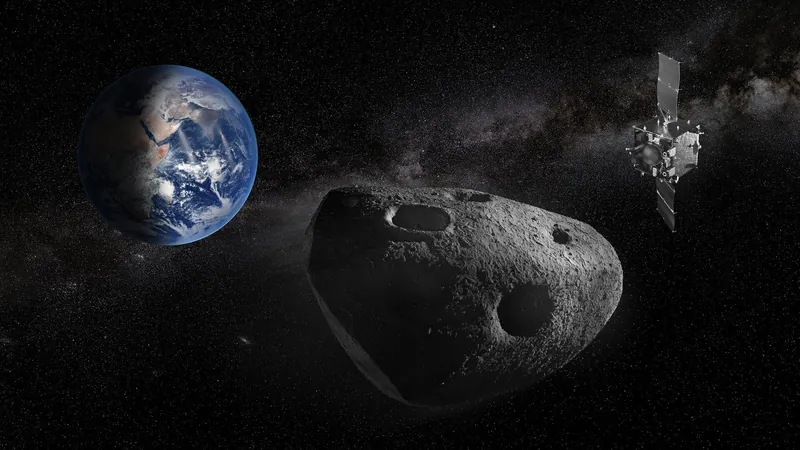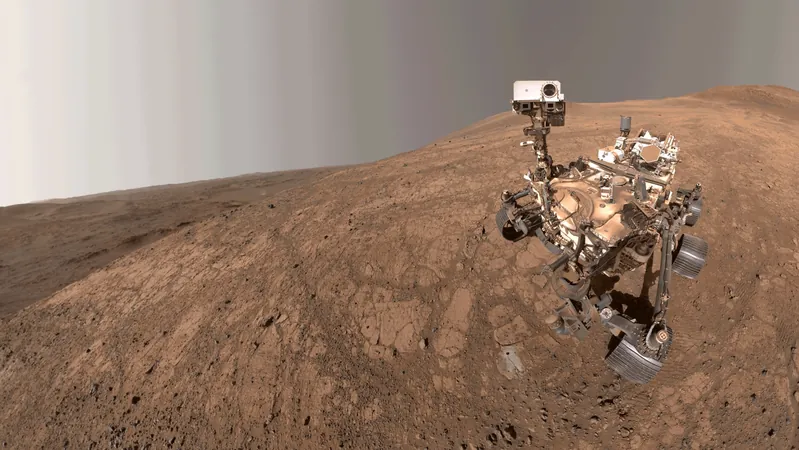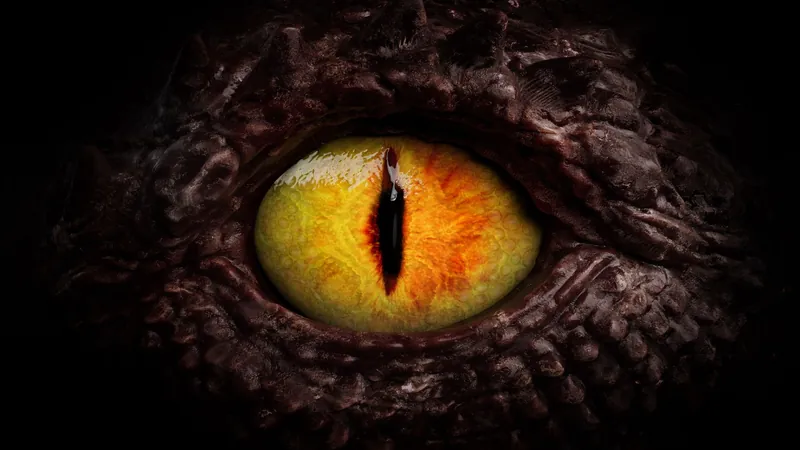
Mark Your Calendars: Asteroid Apophis Will Light Up the Night Sky in 2029!
2025-09-09
Author: Daniel
Get Ready for a Celestial Spectacle!
In an astonishing cosmic event, the potentially hazardous asteroid 99942 Apophis is set to make its closest pass by Earth on April 13, 2029. As it streaks across the night sky, over 2 billion observers in Africa and Western Europe will have the incredible opportunity to witness this celestial marvel with the naked eye! Expect it to shine as brightly as the stars in the Big Dipper—an experience of a lifetime!
A Historic First in Asteroid Observation
According to MIT’s Richard Binzel, a leading planetary scientist, this flyby will mark the first occasion in space history where a potentially hazardous asteroid is visible without any telescopic assistance. Apophis, measuring a whopping 1,100 feet (340 meters) across—similar in height to the Eiffel Tower—has only had such a close approach once every 7,500 years!
A Golden Chance for Scientific Discovery!
While the public gears up for a breathtaking view, scientists are even more excited about what this event represents: a once-in-a-millennium opportunity for an experiment in real-time observation of how Earth's gravity influences a massive asteroid. "We can only speculate until the moment arrives," Binzel said, underscoring the thrill of the unknown.
From Chaos to Safety: The Journey of Apophis
When first discovered in 2004, Apophis was considered a potential threat, with early calculations suggesting a concerning 2.7% chance of impact. This led to its nickname as the 'god of chaos' asteroid, corresponding to its namesake in Egyptian mythology. Fortunately, continuous tracking reduced this likelihood dramatically, and by 2021, scientists confidently declared it poses no danger for the next century.
The Physics of Encounter: What to Expect?
As Apophis approaches Earth, it will zoom past at just over 18,600 miles (30,000 kilometers) above the surface—far closer than any geostationary satellites! This encounter will reshape its orbit and may even alter its rotation. "While Earth may not feel the cosmic brush, Apophis will emerge transformed," Binzel noted with enthusiasm.
NASA's Mission to Unravel Apophis's Mysteries
To observe these changes, NASA is repurposing its OSIRIS-REx spacecraft into OSIRIS-APEX, tasked with studying Apophis before, during, and after its flyby. One aim is to detect seismic activity within the asteroid—a monumental stride in our understanding of such celestial bodies.
International Collaboration: The RAMSES Mission
Additionally, the European Space Agency’s proposed Rapid Apophis Mission for Space Safety (RAMSES) aims to follow Apophis closely, possibly deploying a cubesat to gather even more data. Slated for spring 2028 launch, this mission will kick off a new chapter in asteroid research.
A Step Toward Planetary Defense
While Apophis presents no immediate threat, it serves as a pivotal test case for planetary defense strategies. By studying the asteroid's behavior and changes, scientists will refine techniques necessary for deflecting potentially hazardous asteroids in the future. As NASA's Tom Statler aptly stated, "Apophis isn’t a reason to panic; it’s a remarkable opportunity to increase our understanding of asteroids and their implications for Earth."
Don't Miss the Show!
So, mark your calendars and prepare for a cosmic event unlike any other. Witnessing Apophis glide through the night sky will not just be a once-in-a-lifetime experience, but also a critical leap in humanity's quest to understand and safeguard our planet from cosmic threats!







 Brasil (PT)
Brasil (PT)
 Canada (EN)
Canada (EN)
 Chile (ES)
Chile (ES)
 Česko (CS)
Česko (CS)
 대한민국 (KO)
대한민국 (KO)
 España (ES)
España (ES)
 France (FR)
France (FR)
 Hong Kong (EN)
Hong Kong (EN)
 Italia (IT)
Italia (IT)
 日本 (JA)
日本 (JA)
 Magyarország (HU)
Magyarország (HU)
 Norge (NO)
Norge (NO)
 Polska (PL)
Polska (PL)
 Schweiz (DE)
Schweiz (DE)
 Singapore (EN)
Singapore (EN)
 Sverige (SV)
Sverige (SV)
 Suomi (FI)
Suomi (FI)
 Türkiye (TR)
Türkiye (TR)
 الإمارات العربية المتحدة (AR)
الإمارات العربية المتحدة (AR)